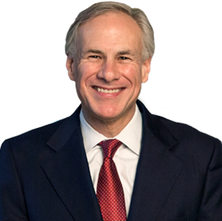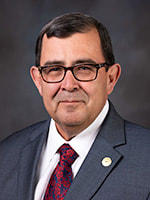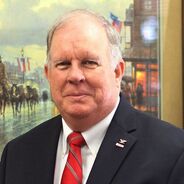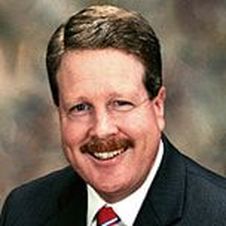State government
Texas state government is divided into executive, legislative, and judicial branches under the Texas Constitution adopted in 1876.
The governor of Texas is the chief executive of the state and is elected by the citizens every four years. Other elected state officials with executive responsibilities include the lieutenant governor, attorney general, comptroller of public accounts, commissioner of the General Land Office and commissioner of agriculture. The terms of those officials are also four years.
The secretary of state and the commissioner of education are appointed by the governor.
The Texas Legislature has 181 members: 31 in the Senate, who are elected to four-year overlapping terms, and 150 in the House of Representatives, who are elected to two-year terms. Regular sessions convene on the second Tuesday of January in odd-numbered years, but the governor may call special sessions.
The judiciary of the state consists of nine members of the State Supreme Court; nine members of the Court of Criminal Appeals; 80 of the courts of appeals; 443 of the state district courts, including 13 criminal district courts; 494 county court judges; 821 justices of the peace; and 1,412 municipal courts judges.
Visit texas.gov for more information.
The governor of Texas is the chief executive of the state and is elected by the citizens every four years. Other elected state officials with executive responsibilities include the lieutenant governor, attorney general, comptroller of public accounts, commissioner of the General Land Office and commissioner of agriculture. The terms of those officials are also four years.
The secretary of state and the commissioner of education are appointed by the governor.
The Texas Legislature has 181 members: 31 in the Senate, who are elected to four-year overlapping terms, and 150 in the House of Representatives, who are elected to two-year terms. Regular sessions convene on the second Tuesday of January in odd-numbered years, but the governor may call special sessions.
The judiciary of the state consists of nine members of the State Supreme Court; nine members of the Court of Criminal Appeals; 80 of the courts of appeals; 443 of the state district courts, including 13 criminal district courts; 494 county court judges; 821 justices of the peace; and 1,412 municipal courts judges.
Visit texas.gov for more information.
Texas Governor
The governor of Texas is the chief executive of the state and is elected by the citizens every four years. The governor must be at least 30 years old and a resident of Texas for the five years immediately before the election.
The governor makes policy recommendations that lawmakers in both the state House and Senate chambers may sponsor and introduce as bills. The governor also appoints the Secretary of State, as well as members of boards and commissions who oversee the heads of state agencies and departments.
The governor of Texas is the chief executive of the state and is elected by the citizens every four years. The governor must be at least 30 years old and a resident of Texas for the five years immediately before the election.
The governor makes policy recommendations that lawmakers in both the state House and Senate chambers may sponsor and introduce as bills. The governor also appoints the Secretary of State, as well as members of boards and commissions who oversee the heads of state agencies and departments.
|
Office of the Governor
State Capital Bldg. 1100 Congress, Room 2S.1 Austin, TX 78701 512-463-2000 800-843-5789 gov.texas.gov |
Mailing Address
P.O. Box 12428 Capitol Station Austin, TX 78711 |
Texas State Senate
The Texas State Senate is the upper chamber of the Texas State Legislature. Alongside the Texas House of Representatives, it forms the legislative branch of the Texas state government and works alongside the governor to create laws and establish a state budget.
Bell County and Temple are located in Texas State Senate District 24 and are represented by Senator Pete Flores.
The Texas State Senate is the upper chamber of the Texas State Legislature. Alongside the Texas House of Representatives, it forms the legislative branch of the Texas state government and works alongside the governor to create laws and establish a state budget.
Bell County and Temple are located in Texas State Senate District 24 and are represented by Senator Pete Flores.
|
Capitol Office
State Capital Bldg. 100 Congress, Room GE.5 Austin, TX 78701 512-463-0124 Sen. Pete Flores District 24 |
Mailing Address
P.O. Box 12068 Capitol Station Austin, TX 78711 |
District Address
410 N. Main Belton, TX 76513 254-939-3854 |
Texas House of Representatives
The Texas House of Representatives is the lower chamber of the Texas State Legislature. Alongside the Texas State Senate, it forms the legislative branch of the Texas state government and works alongside the governor of Texas to create laws and establish a state budget. Legislative authority and responsibilities of the Texas House of Representatives include passing bills on public policy matters, setting levels for state spending, raising and lowering taxes, and voting to uphold or override gubernatorial vetoes.
Temple has representative in two House Districts.
Texas State House District 55 - Representative Hugh Shine
The Texas House of Representatives is the lower chamber of the Texas State Legislature. Alongside the Texas State Senate, it forms the legislative branch of the Texas state government and works alongside the governor of Texas to create laws and establish a state budget. Legislative authority and responsibilities of the Texas House of Representatives include passing bills on public policy matters, setting levels for state spending, raising and lowering taxes, and voting to uphold or override gubernatorial vetoes.
Temple has representative in two House Districts.
Texas State House District 55 - Representative Hugh Shine
Texas State House District 54 - Representative Brad Buckley, DVM
Texas State Board of Education
The State Board of Education (SBOE) sets policies and standards for Texas public schools. The primary responsibilities of the SBOE include setting curriculum standards, reviewing and adopting instructional materials, establishing graduation requirements, overseeing the Texas Permanent School Fund, appointing board members to military reservation and special school districts, providing final review of rules proposed by the State Board for Educator Certification, and reviewing the commissioner's proposed award of new charter schools, with authority to veto a recommended applicant.
There are 15 state Board of Education members who are elected by Texans to four year terms of office. Each member represents about 1.8 million Texans.
Bell County and Temple are located in SBOE District 10 and are represented by Tom Maynard.
The State Board of Education (SBOE) sets policies and standards for Texas public schools. The primary responsibilities of the SBOE include setting curriculum standards, reviewing and adopting instructional materials, establishing graduation requirements, overseeing the Texas Permanent School Fund, appointing board members to military reservation and special school districts, providing final review of rules proposed by the State Board for Educator Certification, and reviewing the commissioner's proposed award of new charter schools, with authority to veto a recommended applicant.
There are 15 state Board of Education members who are elected by Texans to four year terms of office. Each member represents about 1.8 million Texans.
Bell County and Temple are located in SBOE District 10 and are represented by Tom Maynard.






